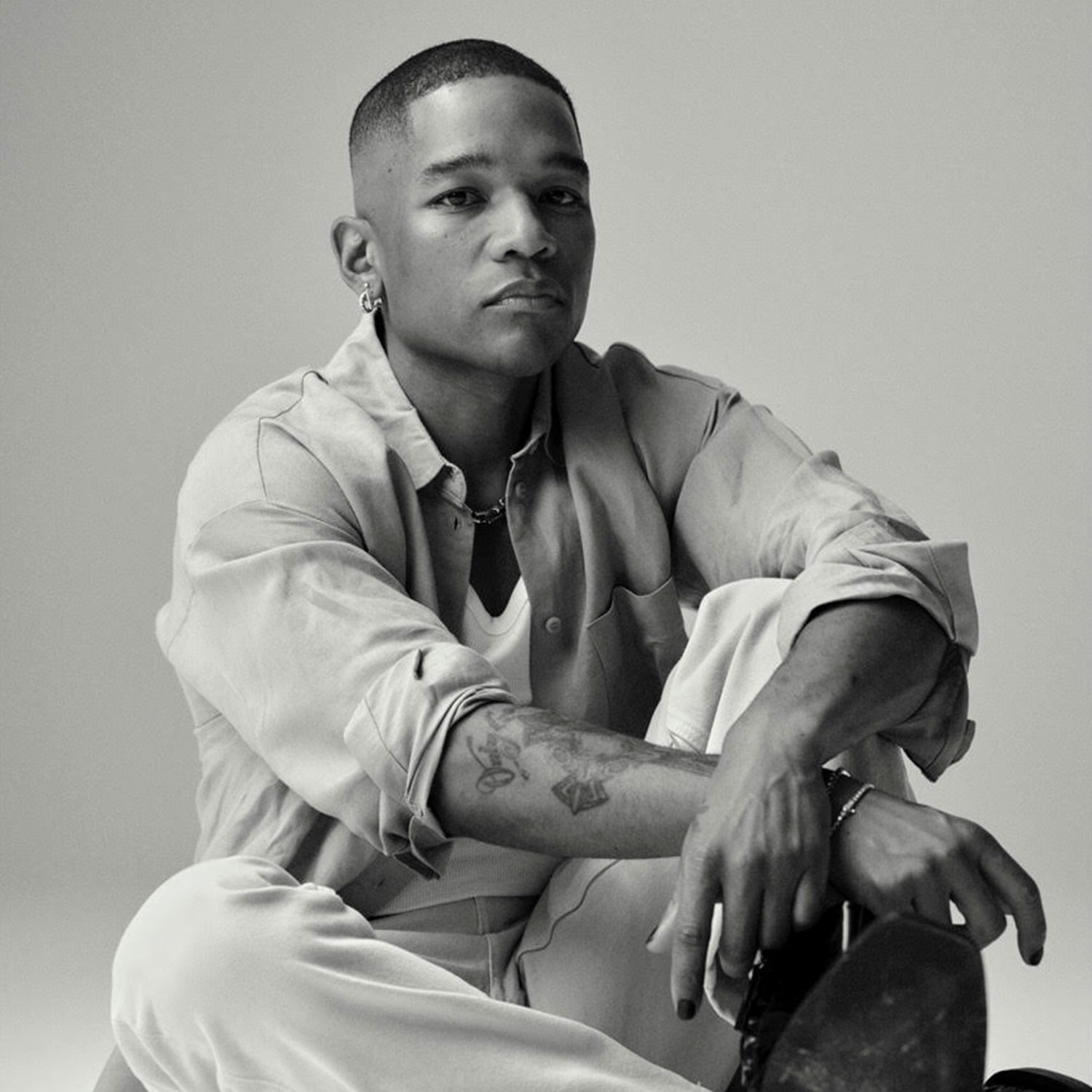You don’t notice what’s missing at first. Toronto’s TIFF Lightbox—that unassuming glass grid, dwarfed by the enormous monolithic condo protruding from the top of it—still looks the same. Inside the five-storey space is a surprising 16,000 square metres containing five cinemas, a screening room, a gallery and a library as well as office spaces from which to oversee it all: the not-for-profit arts organization, which is dedicated to “transforming the way people see the world through film.”
Then you catch it: The “TIFF” sign is still there above the entrance, but “Bell Lightbox” has been quietly removed. Canada’s leading telecom company got naming rights thanks to a $30-million investment in 2006, back when this King Street building—designed to be the headquarters of the Toronto International Film Festival—was still being erected. But last summer, Bell suddenly dropped its sponsorship. Now, the sign looks naked, diminutive—four tiny letters for that cavernous house of mirrors.
When the Lightbox opened in 2010, Noah Cowan, the organization’s artistic director at the time, claimed that its only real analogue was London’s British Film Institute. Last year, the Lightbox screened 504 films; much of its programming is the kind of smaller, independent and international cinema that is so hard to find at the multiplex these days. This year, it increased its membership by almost a quarter, and since it first opened, it has grown its revenue by $17 million. Coinciding with TIFF’s 50th anniversary next year, the Lightbox’s upcoming 15th is itself an achievement.
And yet the loss of its biggest sponsor comes after years of inner turmoil, reflecting the external tumult plaguing the arts at large. “I think TIFF’s status has slipped a bit in the past few years with the pandemic and streaming, which are the two major events that have affected independent film as a whole and film festivals in particular,” says Brian D. Johnson, author of Brave Films Wild Nights: 25 Years of Festival Fever. This has exerted pressure on the larger arts organization that acts as TIFF’s home base, which has been further squeezed with Bell pulling its financing. At $5 million a year, Bell was single-handedly keeping the lights on at the Lightbox, which had an “occupancy cost” in its 2022 Canada Revenue Agency filing of $4.6 million. As one ex-programmer (who wished to remain anonymous as they still work in film) put it: “That place is a money pit.”
“We didn’t have that clear vision of ‘This is what this company is.’”
The sources I spoke to, many of them former employees, characterize TIFF as a dysfunctional institution weighed down by the demands of its oversized headquarters. Last year, on the eve of the festival (already afflicted with a reduced star presence due to the actors’ strike), the news broke that Bell had chosen not to renew its sponsorship of TIFF after almost three decades. Two days earlier, TIFF’s chief operating officer had resigned and confirmation of its vice-president of partnerships’ resignation was also made public. All of this piled on to the day-to-day plight, according to multiple sources, of a staff that had gone through several rounds of layoffs and felt overlooked by those above them. Ex-employee Lauren Coughlan distills the ongoing problems at TIFF into two central issues. “One of them is a true leadership issue. It’s really a from-the-top problem of an inability to successfully hire in upper management,” she says. The other? “We didn’t have that clear vision of ‘This is what this company is.’”
I was warned by friends in the film community that no one would talk to me about TIFF. I spoke to 10 people for this piece. Among the 17 others I contacted, most did not respond. Some claimed they had little insight as they no longer worked there, felt uncomfortable as they had friends there or still worked in the arts and couldn’t be transparent. Two people contacted me and then didn’t follow up. Two others would speak only off the record.
So, when Judy Lung, TIFF’s vice-president of strategy, communications and stakeholder relations, wrote to me and said that “it’s not an exaggeration to say most people in the Canadian screen industry have worked in some way at TIFF over the years,” it landed less as a jovial aside and more as a sign of foreboding. That outsize influence means that TIFF, in some ways a saviour of cinema in this country, also functions despotically. The organization holds the entire film industry so tightly in its grasp that it can’t be held to account.
“This is the thing about TIFF,” says Coughlan. “I looked around the industry and thought, ‘Well, I may have topped out. This might be the best there is.’ Where do you go after a major festival?”
Related: Gen Z Inspired My Mid-Career Pivot
Launched in 1976, The Toronto Festival of Festivals, as TIFF was originally known, was an opportunity for three film producers—Bill Marshall, Dusty Cohl and Henk Van der Kolk—to showcase the best films from festivals around the world as well as some of their own works. It hopped around different venues in the city that reflected its democracy and the taste of its programmers. Valerie Laws, who started attending in 1983, remembers when a pass meant you could walk into anything. She once saw eight films in one day. “It was essentially a different film festival for every person who attended,” she says.
This homemade approachability—one week, 100 movies, $6 passes—gave the event a quaintness that Torontonians could own and it became known as the “people’s festival.” “It could crudely be called the indus- trial outlet mall of world cinema,” says Johnson, “while Cannes was the high altar.”
Things started to change after Piers Handling became CEO in 1994 and the event was rebranded as the Toronto International Film Festival. A string of People’s Choice Awards wins—voted for by the festival audience—that translated into Oscar awards meant that TIFF became less a place for locals to hang out than for Hollywood to campaign for awards. This upmarket iteration of the festival no longer fit the offices it was renting a few doors down from Maple Leaf Gardens at 2 Carlton—which ex-staffer Nathaniel Siegler describes as “really crappy.” He was one of a ragtag group of young, inexperienced cinephiles on the fundraising team willing to work long hours for low pay and festival access; they were replaced in 2006 by a shiny new crew to front the campaign for TIFF’s new headquarters.

A stable home meant the festival would no longer be a roving event in thrall to local theatre chains. For programmers like Diana Sanchez, who would go on to become TIFF’s senior director of film, the prospect of sustained programming outside festival constraints was exciting, she told me. This would include the Cinematheque, TIFF’s popular year-round series of screenings and talks centred around a seemingly bottomless archive of classic films. (In fact, there are about 9,000.) In 2017, Handling told The Globe and Mail that his aim was “to build a centre of critical study somewhere in Canada.” If the festival was to provide the pulsing heart of this new organization, the Cinematheque would give it its soul. But for a scrappy organization that operated on a mere $13 million in 2004, a campaign goal of $196 million was, to put it mildly, ambitious.
Toronto’s KPMB Architects, the firm behind the Gardiner Museum and Koerner Hall, were hired to design the building. They worked alongside a vociferous committee of international filmmakers—among them Atom Egoyan, David Cronenberg, Sarah Polley and Deepa Mehta—who, according to architect Bruce Kuwabara, referred to the theatres he was to build as “cathedrals of cinema.”
“I was desperately trying to make sure it didn’t look like an office building,” recalls Kuwabara. He was able to keep out street sounds and vibrations by designing the theatres as “kind of a building within a building” and placing concrete boxes on the building’s frame like “a big carton onto a bookshelf,” he says. (At the end, Kuwabara respected Egoyan in particular for saying, “You’re the director. You’ve got the final cut.”)
But while this centre for cinematic communion was being born, the festival was becoming less and less about community. “From the time they announced the Lightbox was going to be built, the tickets were getting more and more expensive,” says Laws. With the biggest proportion of TIFF’s budget coming from philanthropic donors and sponsors (38 per cent in 2022), they were prioritized, along with TIFF members. This led to less ticket availability for the general public. Add to that the increasingly elaborate star-studded galas designed to attract patronage, and TIFF started to look like, as Toronto Sun film critic Bruce Kirkland put it in 2008, “an elitist corporate spectacle.”
When Laws saw the cost of her tickets jump by 28 per cent in 2014, she finally wrote to Handling. He sent her back “a nice letter” and two opening- night-gala tickets. Two years later, TIFF started using Ticketmaster, the site famous for controversies surrounding astronomical ticket-resale prices. If you are quick enough to get into regular festival screenings these days, the price is a reasonable $26 (on par with other festivals around the world). But even before resellers plump up the prices, premium screening tickets can go for as high as $88. So much for the people’s festival; TIFF is now the kind of event for which you can resell a premiere ticket for more than $1,000.
To take over one of Canada’s biggest not-for-profit arts organizations during a worldwide pandemic requires a certain level of sang-froid—and Cameron Bailey is definitely cool. In February, we sat in the TIFF CEO’s minimalist office with Senegalese actress M’Bissine T. Diop, in a still from the 1966 film Black Girl, watching over us, along with TIFF’s director of communications, Alejandra Sosa. Bailey wore a buttery black leather jacket and exuded a serene sense of control. When I asked him why no one would talk to me about his organization, it was one of the rare moments his serenity flickered, but only because he was baffled. By sheer force of presence, Bailey transcends confrontation. This kind of unflappability must have been invaluable when he was named to his position in 2021, right in the middle of Covid. “That has been one of the defining elements of my tenure,” Bailey told me, adding with a laugh, “It’s not great.”
I was there the day the Lightbox shut its doors in March 2020, arriving for a screening of Kelly Reichardt’s First Cow only to be turned back. (“We thought it was going to be a couple of weeks,” Bailey says.) In the following 18 months that the Lightbox was closed, TIFF membership dropped by half, according to Bailey. Offers of free access to the Cinematheque for members and free membership to anyone under 25 propped those numbers back up again. “But the makeup is different,” Bailey says. “It’s younger than it used to be.” He expressed surprise at so many young people seeking out auteur cinema, despite the growing success of repertory theatres in Toronto. Bailey likens screenings of Chantal Akerman’s 1975 feminist rendition of slow cinema Jeanne Dielman, 23 quai du Commerce, 1080 Bruxelles to a rock concert. “It’s become one of those real markers of being in the know about movies. And we find that young people actually want to be in the know.”
What the audience wants is of prime importance to Bailey. “I think what TIFF means to most people who have some connection with us is that it’s a people’s film organization—that it is about the audience,” he says. His interpretation of the people’s festival is as much about what TIFF brings to that audience as it is about what that audience brings to TIFF. That’s why there are so many social spaces in the Lightbox, from the ground-floor restaurant to the second-floor bar to the third-floor café. The act of gathering to discuss cinema is transformational, Bailey says. “It unites everything we do: When people start talking about movies, you get their different perspectives, and that tells you who they are.”
Bailey describes regular office “curation meetings” that involve “thinking through how we engage people in all the different ways they show up.” In the past, individual cinephiles with sharp taste knew how to engage those people. It’s less clear whether that still remains the case. “Now, none of the programmers have any identity and you don’t know who likes what,” says the anonymous ex-programmer. It also means that the once in-depth offerings of Cinematheque, with its 40-films-long retrospectives, have been dramatically reduced. Rather than, for instance, diving into a director’s complete career—revealing their progression across their entire oeuvre—the program is now more about sampling. Bailey believes that because streaming makes so many older films available, exhaustive programming is less valuable than introducing new work to audiences who want to be in the know. It’s a big change for the organization: Outside the festival, Cinematheque was perhaps its most respected year-round offshoot. Not to mention the original aspiration for the Lightbox was to be a place of critical study that would also house the extensive archives that fuel the Cinematheque. The program’s diminution is a common point of frustration among local cinephiles, for whom it has been a rare opportunity to fully engage in cinema and its history. It also limits the depth of discussion, countering the organization’s goal of transformation.
While TIFF was originally renowned for its approachability, there seems to be an all-encompassing inaccessibility to it now. Already the name itself is confusing for the general public: Is TIFF an arts organization or a festival? Then there’s the location, smack between an inhospitable row of theatres and tourist-trap restaurants. “A lot of people expected that the Lightbox would change that strip of King Street,” says Siegler, who worked on the building’s fundraising team from 2004 to 2006. “That’s one of the few areas that’s been pretty much exactly the same over the past 20 years.”

Once you get past its subtle exterior, the inside of the Lightbox is itself perplexing. Only on my most recent visit did I notice a silver slab attached to a concrete pillar off to the side mapping out each floor. That’s when I realized you have to take the elevator to get to the top floor, home to perhaps the most spectacular of the Lightbox’s rooms: the Film Reference Library. This space is so replete with archival material that when I visited, Crimes of the Future set pieces were unceremoniously strewn about. These are the kinds of objects that would have once populated The Gallery, an exhibition space on the first floor, but it turned out to be too expensive to keep it as an actual gallery and it’s now rented out for events. The cinemas, which seat a total of 1,333, are also rented out during the day; according to a 2017 Globe and Mail report, Lightbox ticket sales bring in less than $1 million in revenue annually. (Sosa said via email that they don’t publicly share the revenue from Lightbox ticket sales or rentals.)
“There’s a consistent issue of ‘Are we trying to be a theatre or are we an event rental space?’” says Coughlan, who was in the programming department from December 2014 to June 2021. She cleared the rights for Film Circuit, the organization’s film outreach program, and says there were constant tense meetings over space. A number of sources agreed that TIFF can’t seem to properly manage being a theatrical venue. “The people who are running the Lightbox are not exhibitors,” says Ron Mann, co-founder of Films We Like, one of the few remaining Canadian film distributors. “That’s really the problem. They don’t know how to do it.” The issue, as he sees it, arises when economic considerations dictate curatorial ones. This is particularly problematic when theatres for local indie and world cinema are dwindling; where 20 or more once existed in Toronto, now there are only a handful. When Mann does get screen time at the Lightbox, it’s limited, which makes his job—as well as the local film scene—increasingly unsustainable. (Fifty of 193 films screened at the festival last year were Canadian.)
“There’s a consistent issue of ‘Are we trying to be a theatre or are we an event rental space?’”
Even then, the schedules aren’t released much in advance, while wider changes aren’t always announced clearly, if at all—a recent hike in ticket prices, for instance, seemed to come out of nowhere. (Sosa said via email that they were announced on the website.) The organization’s streaming service, which was created for the pandemic, was also quietly shut down in February. (The site claimed the organization is “shifting focus” to the physical Lightbox; Sosa said via email that subscribers were notified.) Then there’s the labyrinthine website. The digital welcome mat to the festival has been a barrier for years. Sosa expressed exasperation when I brought it up, as it was only just redesigned in July. Guiding me through ticket purchasing, Bailey admitted it required a lot of steps, but said, “We’ve focused on ease of use.”
TIFF’s string of high-profile departures over the past five years—most notably Bell—seems disproportionate, even accounting for the pandemic. Bell declined an interview, but a statement from Devorah Lithwick, the company’s senior vice-president and chief brand officer, praised the festival’s work. Though Lithwick did not address the dissolution of the TIFF sponsorship, two months before its announcement, Bell’s parent company cut 1,300 jobs and announced the closure of six radio stations and the sale of three others. (Lithwick remains on TIFF’s board.) In the past five years, TIFF also lost its co-head, senior director, chief operating officer and vice-president of partnerships—all of them women. While there is gender parity across TIFF’s leadership, its top three positions (chair of the board, CEO and chief financial officer) are all currently occupied by men.
“There were really consistent issues of people not being ready for the scope of their job,” says Coughlan. It is not uncommon for arts organizations to staff their higher positions based on creative expertise rather than business acumen, which might be more pertinent. Bailey, for instance, started out at the festival as a programmer before becoming the art director and making his way up to co-head and then head—but he was promoted to those positions. “The problem is how they let the managers go,” the anonymous ex-programmer says. “There is no transference of knowledge in that organization.” This is doubly problematic because, per Coughlan, people are often recruited based on their programming experience for positions outside their skill set. “People [were] hired to be senior managers—managing teams of people, overseeing other managers—without management experience,” she says. “This happened repeatedly.”
Coughlan initially enjoyed working at TIFF when she arrived in 2014 but noticed a precipitous decline within a few years. This pattern of initial excitement followed by extreme disillusionment united a number of the sources I spoke to. And posts from the past year on Glassdoor, a job site where employees can review organizations, are consistent with Coughlan’s description of ill-equipped leadership at TIFF. The word “toxic” appears several times. (The site gives the organization a score of two out of five based on 229 reviews, while the CEO gets a 20 per cent approval rating.) Repeated criticisms surround the integration of new hires, lack of promotion and overworked and underpaid staff. And compensation does appear to skew top-heavy. In 2022, the number of people making over $200,000 grew from three to five despite TIFF shedding 60 per cent of its full-time employees and 70 per cent of its part-time employees between 2018 and 2022. “With TIFF, it’s always been kind of like, ‘You should be grateful,’” says the ex-programmer. “‘Aren’t you lucky to be working in a job that you’re so passionate about?’”
According to Bailey, these complaints may be conflating TIFF’s year-round non-profit arts institution with its star-spangled namesake. “Sometimes it gives people a certain impression of the workplace.” TIFF can’t match the salaries of for-profit companies, he says. What they can offer the young employees they often hire is professional development, mentoring, exposure to the industry and the feeling that they are “making a difference.” Bailey admits that the 10-day festival’s hard deadline “brings a certain kind of intensity to the work,” but they are looking at how to improve that: “I don’t think we’re there yet. But I can tell you that we are working on it.”
I would have liked to talk to other members of TIFF’s leadership team, but over several weeks, I wasn’t able to secure interviews with the chief financial officer, Douglas Allison, the head of the board, Jeffrey Remedios, or the chief programmer, Anita Lee. I emailed Sosa, the director of communications, 10 questions about numbers and stats, but only four were answered. (The financial information across this story was cobbled together from TIFF’s annual reports, publicly available on its site, as well as harder-to-access public filings with the CRA.) As an arts organization that gets one-third of its funding from government grants, TIFF is expected to be transparent. But Canadian watchdog organization Charity Intelligence, which bases its results on audited reports provided by the CRA, gives TIFF a D+ for public reporting. It also states that only 64 cents on the dollar are available for its programs after fundraising and administration and management costs, which lands “outside of Charity Intelligence’s reasonable range” of overhead spending. “There seems to be this internal sense of ‘We’re just this little festival,’” Coughlan says. “We all know that arts are tricky to fund and are constantly trying to do more with less, but it’s also one of the biggest festivals in the world.”
“With TIFF it’s like, ‘You should be grateful to be working in a job that you’re passionate about.’”
Of TIFF’s $43 million in expenditures in 2022, $29 million was spent on charitable activities. That includes highly publicized diversity initiatives, like Share Her Journey, which focuses on representation of women, and Every Story, which supports a multiplicity of under-represented groups. But what these programs actually do and their sustained impacts are not immediately clear. (A number of Share Her Journey fellows did not respond to interview requests.) This is particularly troubling considering community partners like BIPOC TV and Film, a non-profit organization advocating for equity in Canada’s screen industry, help with outreach despite their own lack of resources. (BIPOC operates on one-tenth of TIFF’s budget at best and sometimes runs initiatives on no budget simply because it benefits the community.)
What I could glean from the TIFF site is that its talent-development programs involve mentorships, workshops and speaking opportunities (and, of course, a greater presence at the festival). Bailey describes connecting people within the industry for Share Her Journey, which is reminiscent of his approach within the Lightbox. “We try to open those doors,” he says. “We’ve made some progress. We can point to people who have moved through those programs and gone on to be able to create new work. Is it enough? There’s always more that we could be doing.”
In its ideal form, the TIFF Lightbox offers something increasingly valuable for how rare it is these days: immersion. At its best, it is a space dedicated to forging a sustained relationship with cinema, one in which time ceases to be limited and there are no distractions.
Corey Atad, a member of TIFF who is often at the Lightbox multiple times a week, has had those transformational experiences that Bailey talks about. He mentions 2020’s Angela Schanelec retrospective, which screened nine of the German auteur’s films in all their static, emotionally ambiguous glory. This holistic approach to one filmmaker’s oeuvre allowed him to get lost in her development as an artist and in turn helped him develop. “It changed how I think about cinema,” he says.
The TIFF Lightbox building itself was designed to be immersive. Kuwabara explains that it was set up to choreograph the people progressing through it. “There’s the whole thing about seeing and being seen and sequencing movement,” he says. But what is immersive in theory is not always the so in practice.
The Lightbox can operate as a warren—box upon box of disorientation; in some ways, it’s a perfect reflection of an organization that functions in similar confusion. TIFF is a $43-million box that keeps tipping from its initial ambition to be Canada’s centre of cinema into a real estate property struggling to pay its bills, the loss of its biggest sponsor rendering the task even more difficult. It is a place that originally grew out of local cinephilia but now leans on its audience for perspective; a place that regularly launches sparkly initiatives around identity rather than devoting its resources to fortifying a diverse local film ecosystem.
In an atmosphere like this, where grand artistic ambitions often go unrealized, it makes sense that the very large, very heavy hinged doors Kuwabara originally chose for the front entrance of the TIFF Lightbox, were silently replaced by sliding doors—“like you see in malls,” he says.











